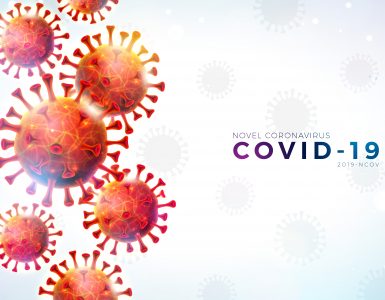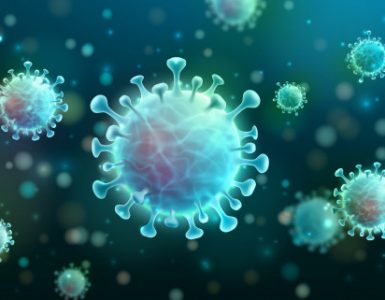Viruses that encode their genome in RNA, such as SARS-CoV-2, HIV and influenza, tend to pick up mutations quickly as they are copied inside their hosts, because enzymes that copy RNA are prone to making errors. After the severe acute respiratory syndrome (SARS) virus began circulating in humans, for instance, it developed a kind of mutation called a deletion that might have slowed its spread. But sequencing data suggest that coronaviruses change more slowly than most other RNA viruses, probably because of a ‘proofreading’ enzyme that corrects potentially fatal copying mistakes.
According to researches, a typical SARS-CoV-2 virus accumulates only two single-letter mutations per month in its genome; a rate of change about half that of influenza and one-quarter that of HIV. Two SARS-CoV-2 viruses collected from anywhere in the world differ by an average of just 10 RNA letters out of 29,903. Researchers have catalogued more than 12,000 mutations in SARS-CoV-2 genomes.
Slow change. . .

Figure 01: A CATALOGUE OF CORONAVIRUS MUTATIONS (Various mutations have been detected in SARS-CoV-2 genomes, including the most prevalent one, D614G. The virus’s genetic code has just under 30,000 nucleotides of RNA, or letters, that spell out at least 29 genes. The most common mutations are single-nucleotide changes.)
Source: Making sense of coronavirus mutations. Nature 585, 174-177 (2020)
SARS-CoV-2 is changing much more slowly as it spreads when comparing with other viruses. But one mutation stands out than the others. It is in the gene encoding the spike protein, which helps virus particles to penetrate cells. That mutation is appearing again and again in samples from people with COVID-19.
Here, at the 614th amino-acid position of the spike protein, the amino acid aspartate (D, in biochemical shorthand) is regularly being replaced by glycine (G) because of a copying fault that altered a single nucleotide in the virus’s 29,903-letter RNA code. It is called as the D614G mutation. The danger is that, D614G is increasing in frequency at an alarming rate. It rapidly becomes the dominant SARS-CoV-2 lineage in Europe and has then taken hold in the United States, Canada and Australia. D614G represents a more transmissible form of SARS-CoV-2 and that might be emerged as a product of natural selection.
That lineage has been found in almost all sequenced samples of SARS-CoV-2. Some experiments suggest that viruses carrying the variant infect cells more easily. But some other work has revealed possible good news that the variant might mean that vaccines can target SARS-CoV-2 more easily. But researchers still have more questions than answers about coronavirus mutations, and no one has yet found any change in SARS-CoV-2 that should raise public-health concerns. But studying mutations in detail could be important for controlling the pandemic. Because those mutations could help the virus to evade immune systems, vaccines or antibody therapies.
Many researchers suspect that if a mutation did help the virus to spread faster, it probably happened earlier, when the virus first jumped into humans or acquired the ability to move efficiently from one person to another. At a time when nearly everyone on the planet is susceptible, there is likely to be little evolutionary pressure on the virus to spread better, so even potentially beneficial mutations might not happen.
This mutation D614G is important because of its position in the spike protein, which is a major target for ‘neutralizing’ antibodies that bind to the virus and render it non-infectious.And viruses with the mutation are also rising in frequency in more than one part of the world. The unmutated strain is known as ‘D’ viruses and mutated strain is known as ‘G’ viruses. Those infected with G viruses seemed to have slightly higher levels of viral RNA in their noses and mouths than did those with D viruses.
No escape from antibodies…

Figure 02: THE MUTATION THAT LOOSENS THE SPIKE PROTEIN Spike proteins on SARS-CoV-2 bind to receptors on human cells, helping the virus to enter. A spike protein is made up of three smaller peptides in ‘open’ or ‘closed’ orientations; when more are open, it’s easier for the protein to bind. The D614G mutation — the result of a single-letter change to the viral RNA code — seems to relax connections between peptides. This makes open conformations more likely and might increase the chance of infection.
Source: Making sense of coronavirus mutations. Nature 585, 174-177 (2020)
But D614G doesn’t stop the immune system’s neutralizing antibodies from recognizing SARS-CoV-2. That might be because the mutation is not in the spike protein’s receptor-binding domain (RBD), a region that many neutralizing antibodies target: the RBD binds to the cell-receptor protein ACE2, a key step in the virus’s entry to cells. But other mutations could help the virus to avoid some antibodies. So, scientists are trying to stay ahead of SARS-CoV-2’s evolution by predicting which mutations are likely to be important.
Studies of common-cold coronaviruses, sampled across multiple seasons, have identified some signs of evolution in response to immunity. But the pace of change is slow. With most of the world still susceptible to SARS-CoV-2, it’s unlikely that immunity is currently a major factor in the virus’s evolution.
But as population-wide immunity rises, whether through infection or vaccination, immune-evading mutations could help SARS-CoV-2 to establish itself permanently while causing mostly mild symptoms when it infects individuals who have some residual immunity from a previous infection or vaccination.
It is also possible that our immune responses to coronavirus infections, including to SARS-CoV-2, aren’t strong or long-lived enough to generate selection pressure that leads to significantly altered virus strains. Those mutations could also become more common if antibody therapies aren’t used wisely; if people with COVID-19 receive one antibody, which could be thwarted by a single viral mutation, for example. Monoclonal antibodies, each of which can recognize multiple regions of the spike protein, might lessen the odds that such a mutation will be favoured through natural selection. Vaccines arouse less concern on this score because, like the body’s natural immune response, they tend to elicit a range of antibodies. It’s even possible that the D614G change could make the virus an easier target for vaccines.
According to researches, mice, monkeys and humans that received one of a number of experimental RNA vaccines, produced antibodies that proved more potent at blocking G viruses than D viruses. That is good news but since HIV mutate to elude many vaccines developed against it, there is a potential of SARS-CoV-2 to evade human immune responses. So, it is better if we can keep our eyes open for additional changes.
Author: Nishinki Thakshana de Silva
B.Sc. (Special degree in BioChemistry and Molecular Biology) – Undergraduate
Faculty of Science
University of Colombo
References:
- Making sense of coronavirus mutations. Nature 585, 174-177 (2020)
- https://www.livescience.com/coronavirus-mutations-explained.html (Accessed on 17.10.2020)
Related Articles :
Diagnostic methods of Covid 19 and novel trends






Nice article 😊
Thank you Satheeka! ☺️